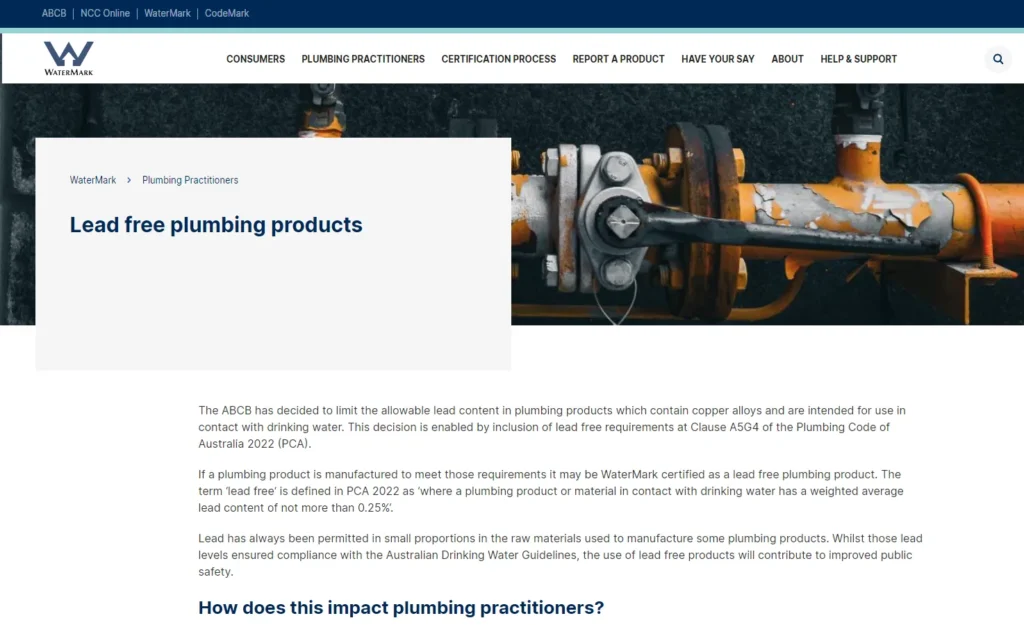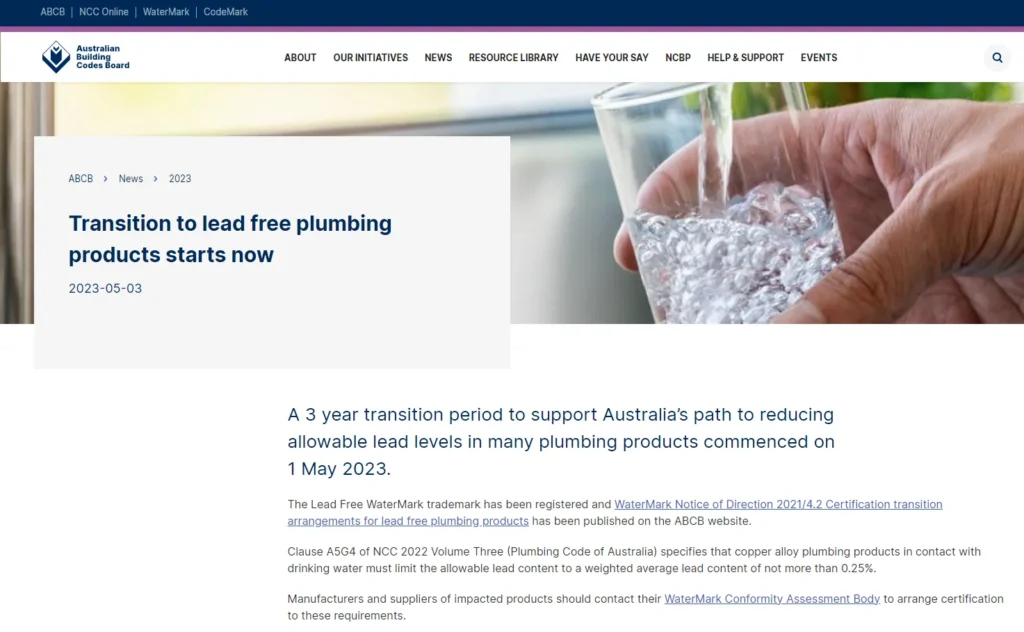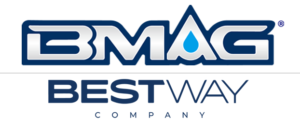In recent years, BMAG has been closely monitoring Australia’s policy on restricting lead-containing materials in drinking water systems. This policy reflects the increased public health awareness and demonstrates the government’s determination to ensure drinking water safety. This policy will lead to the demand for lead-free fittings will usher in explosive growth. Let’s comprehensively interpret this important reform starting in 2018.

Enhavo
ŜaltuPolicy Origins and Evolution
Before 2018, Australia’s restrictions on lead content in drinking water system materials were not stringent. While the standards at that time required water meters to comply with lead-free standards, brass fittings were allowed to contain up to 4.5% Pb, which could still affect public drinking water safety. As awareness of lead hazards increased, the government began reassessing these standards.
In 2018, the Australian Drinking Water Guidelines updated the Pb content in drinking water from 0.01 mg/L to 0.005 mg/L. Shortly after, the Australian Building Codes Board (ABCB) announced plans to significantly reduce the maximum allowable Pb content in products used in drinking water systems from 4.5% to 0.25% by 2025. Emphasis is placed on promoting lead-free brass fittings to achieve this purpose.

Policy Advancement and Updates
In July 2020, the Australian Broadcasting Corporation (ABC) published an investigative report revealing high concentrations of lead in many households’ drinking water, sufficient to harm human health. This raised widespread public concern and accelerated policy advancement.
In 2021, the ABCB issued regulations on reducing lead content in drinking water systems, confirming the implementation of new low lead content standards from September 1, 2025. Subsequently, states and territories began revising their building codes in preparation for the comprehensive construction of lead-free drinking water systems.

Public Response
The public response has been generally positive, with most people considering it is a necessary measure, although some have concerns about the implementation timeline and costs. Some civil organizations have even begun spontaneous water quality testing activities, further promoting policy implementation.
Impact on Lead-Free Fittings Manufacturers
This policy has a significant impact on lead free fittings manufacturers, especially producers of brass plumbing fittings. Manufacturers face two major challenges: technological innovation and cost control.
Regarding lead-free or low-lead materials, the previously commonly used valve materials, such as CW617N and CW602N, exceed the latest standards for lead content and can no longer be utilized. Currently, the mainstream low-lead materials include C46500, CW511L, C69300, C87850, C89325, C89831, C89833, C89835, C89844, C90300, C90800, and C90810.

For instance, C69300 has a maximum Pb content limit of only 0.09%, fully complying with the new standards while also exhibiting excellent machinability, making it one of the preferred materials for low-lead valves and low-lead fittings.
In terms of cost, new materials and processes will inevitably increase production costs. Currently, the cost of low-lead brass raw materials (e.g., C69300/C87850 – Pb<0.1) is 100-200% higher than traditional brass materials (e.g., CW617N). This increased cost is likely to be passed on to end consumers.

Comparison with Other Countries
Australia’s lead-free water systems policy change is a microcosm of the global lead-free trend. The United States implemented similar low-lead requirements as early as 2014, limiting lead content in drinking water systems to below 0.25%. The European Union is also considering tightening relevant regulations, and Canada is similarly advancing comparable policies. This indicates that reducing lead content in drinking water systems has become a global public health issue.

Future Outlook
Looking ahead, BMAG believes this low lead water policy will bring about changes in the following aspects:
- Comprehensive improvement in drinking water quality: With the implementation of new standards, the quality of drinking water in Australia will be significantly improved in the future.
- Acceleration of technological innovation: To meet new standards, there will inevitably be more innovative no-lead materials and technologies to improve water quality further.
- Changes in market structure: Some small manufacturers unable to adapt to new standards will be eliminated, and industry consolidation will occur.
- Convergence of international standards: Australia’s initiative may promote further unification of global drinking water system standards.
- Increased public awareness: This policy change process will continue to raise public awareness of drinking water safety.

Overall, although implementing this policy faces technological and economic challenges, in the long run, it will undoubtedly bring a safer and healthier drinking water environment for the Australian people. As a water systems expert, BMAG looks forward to the implementation of this policy. We have prepared lead-free brass fittings, lead-free water meters, lead-free valves, lead-free couplings, and other products that meet lead-free standards. We welcome inquiries from our Australian friends and hope to contribute to the successful implementation of Australia’s lead-free water system reform.
References:
- https://www.abcb.gov.au/news/2018/lead-plumbing-products-contact-drinking-water
- https://www.abc.net.au/news/2020-07-11/lead-in-water-pipes-major-health-risk/12443098
- https://www.abcb.gov.au/sites/default/files/resources/2021/Decision_RIS_Lead_in_plumbing_products.pdf
- https://www.epa.gov/dwstandardsregulations/use-lead-free-pipes-fittings-fixtures-solder-and-flux-drinking-water








